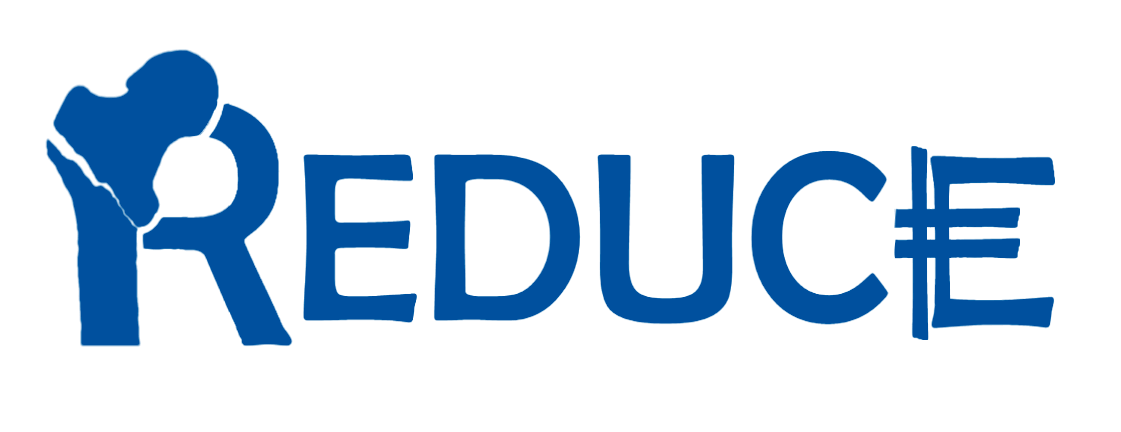
REDUCE hip fracture service implementation toolkit
The hip fracture service implementation toolkit is freely available to all healthcare professionals and service managers to support the quality improvement of fracture service provision within acute hospital settings across the UK.
Clinical governance and multi-disciplinary team (MDT) working
Point and purpose:
Clinical governance assures the effectiveness and safety of a clinical service. Clinical Governance meetings are the forum for reviewing quality outcomes, planning, and driving service improvement. The membership, agenda and frequency of meetings all act to influence patient outcomes. This 'how to' tool, provides guidance for effective clinical governance.
The REDUCE Study has shown the importance of routinely reviewing patient feedback, such as Friends and Family Test data, at clinical governance meetings, to improve patient experience and outcomes. An example format for Friends and Family Testing is provided.
Both the REDUCE Study and the NHFD support patient follow-up at 120-days and example questionnaires are provided for this purpose.
Multi-disciplinary team (MDT) working is essential to deliver effective, stream lines care along a complex patient pathway, and ensure optimal patient outcomes. The 'how to' tool, provides guidance for effective MDT working.
Of note, the clinical governance and MDT working tools will also be of benefit to non-hip fragility fracture services.
Tools:
Hip fracture pathway checklists
Point and purpose:
These 5 checklists are informed by the findings from the REDUCE study. They support evidence-based practice and set targets to optimise care pathways. They are not intended to list all aspects of care, but rather focus on those organisational changes, that if delivered, have been associated with improved patient outcomes in the REDUCE study.
The 5 checklists map to the inpatient pathway from the emergency department through admission to rehabilitation. They can be downloaded to inform MDT quality improvement work, and achievement against these checklists can be reviewed at Clinical Governance meetings.
Tools:
Multidisciplinary team roles and structure
Point and purpose:
The care of older patients with fragility fractures requires expertise from a wide number of different health professionals. The typical multidisciplinary team structure for a hip fracture unit is shown in an organogram. Whilst some of these roles are well recognised, others are specific to fragility fracture care delivery in complex older patients. Role specification tools are provided to guide the writing of job descriptions for these important MDT roles.
Tools:
- REDUCE Organogram v.1
- REDUCE Role specification – Consultant/specialist orthogeriatrician essentials v.1
- REDUCE Role specification – Speciality doctor in orthogeriatrics essentials v.1
- REDUCE Role specification – Specialist nurse in orthogeriatrics essentials v.1
- REDUCE Role specification – Advanced practice physiotherapist essentials v.1
Hip fracture unit service specification and business case development
Point and purpose:
Multidisciplinary team (MDT) teams are made up of multiple healthcare professionals, each providing a different specialist component of care along the patient care pathway from emergency department presentation through to hospital discharge. The roles and responsibilities of these healthcare professionals are outlined in the ‘Hip Fracture service specification’, which includes links to standards from the relevant professional organisations.
The REDUCE Cost Benefit Calculator (the Calculator) has been created to assist NHS organisations in preparing a business case or other documentation leading to improvements in care for people with hip fractures. The Calculator has been designed to make it easier for clinicians and managers to create a business case for investment to make one or more of 13 evidence-based service improvements, identified by the REDUCE Study to lead to improvements in patient care and greater efficiency in the hospital in which the improvement is implemented.
The content of the cost benefit Calculator maps to the model business case, a written tool which provides guidance and example text that you can edit and use to construct a business case for hip fracture service improvement locally. Notably, whilst these tools have been derived based on evidence supporting hip fracture care, they can be adapted to inform non-hip fragility fracture services.
A narrated powerpoint, presented by Prof Celia Gregson, the REDUCE Study Chief Investigator, talks you through how to use the cost benefit Calculator.
The Calculator is made available free of charge to those working in NHS organisations. To access the Calculator you will need to register yourself and your hospital and then you will be emailed the Calculator for you to use as you wish. Registration is necessary simply to be able to audit use.
Tools:
- REDUCE Hip Fracture service specification v.1
- REDUCE Model business case v.1
- REDUCE Evidence-based service improvement cost benefit Calculator v.1
- REDUCE How to use the cost benefit Calculator v.1
The REDUCE benefits calcuator is supported by UCB

Hip fracture service quality improvement
Point and purpose:
Within an ever-changing NHS, services need to continually evolve. Clinical audit identifies areas where service improvement is needed. The National Hip Fracture Database (NHFD) Key Performance Indictors (KPIs) provide nationally agreed audit standards, and the NHFD website provides hospital specific metrics on KPI achievement. NHFD performance should be routinely reviewed as part of Clinical Governance.
The REDUCE study has shown improved patient outcomes when a patient moves within 4 hours of presentation from the emergency department to a ward specialising in hip fracture care. Outlying patients on wards which lack specialist hip fracture expertise should be avoided, unless alternative specialist input is needed as a clinical priority (e.g. acute cardiology).
The REDUCE Audit tool for outlying patients focuses attention on NHFD KPIs as well as other outlier metrics. This tool is freely available and able to be modified according to local preferences and needs, including for non-hip fragility fracture service audit.
Tools:
Hip fracture service induction
Point and purpose:
Inpatients wards are often in part staffed by rotational doctors in training, and rotational allied health professionals, who make up an important part of the multidisciplinary team (MDT). Patient care is improved if members of the MDT understand the complexity of the care pathway in which they are working, and the overall vision for the service.
The REDUCE hip fracture unit handbook template is a tool that can be adapted for use in your local service and disseminated to new clinical staff when they first join your MDT. It provides a structure and generic instructions for the elements needed within a well-functioning hip fracture service. Once adapted to your hospital, it is advisable that the content is reviewed on an annual basis, to keep it up to date. Of note, this template can also be adapted for services managing non-hip fragility fracture care.
The REDUCE ‘introduction to hip fracture care’ is a narrated powerpoint presentation, in which Prof Celia Gregson, the REDUCE Study Chief Investigator, provides an introduction to hip fracture care.
Tools:
Coming soon!
- REDUCE Introduction to hip fracture care presentation v.1
Links to further training resources, provided outside of the scope of the REDUCE study, are available here:
Hip fracture care bundle:
Orthogeriatrics YouTube talks:
- Using hip fracture to help us understand Frailty Frailty and hip fracture
- Using hip fracture to help us understand Peri-operative care Peri-operative care and hip fracture
- Using hip fracture to help us understand Delirium Delirium and hip fracture
- Using hip fracture to help us understand Nutrition Nutrition and hip fracture
- Using hip fracture to help us understand Falls Falls and hip fracture
- Using hip fracture to help us understand Osteoporosis Osteoporosis and hip fracture
The Royal Osteoporosis Society and the REDUCE Study team thank the authors for their kind permission to share these links.
Disclaimer:
These tools are provided free as part of the hip fracture management toolkit by the Royal Osteoporosis Society and The REDUCE study. These tools do not represent the views of the Royal Osteoporosis Society. Every effort has been made to make sure that the information contained within these documents are accurate and in full compliance with UK law, and with best practice at the time of writing. There is no guarantee as to the accuracy or reliability of any of the information contained in these tools and use of them is entirely at the user's risk and no liability whatsoever is accepted by the Royal Osteoporosis Society.
For healthcare professionals
National Hip Fracture Database resources
The National Hip Fracture Database (nhfd.co.uk)
 Search
Search
 Login
Login

 ROSacademy@theros.org.uk
ROSacademy@theros.org.uk



